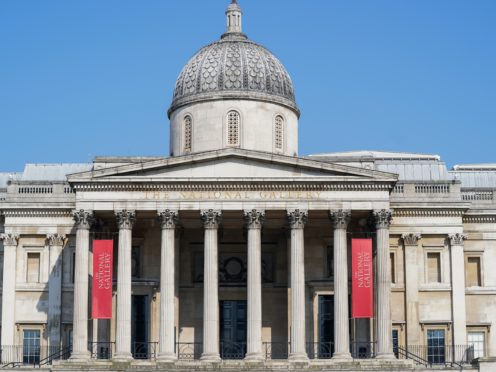The director of the National Gallery has said he hopes the museum’s first major exhibition devoted to a female historical painter will shine a light on why there were so few famous female artists throughout history.
The gallery will stage the first major exhibition in the UK of 17th century painter Artemisia Gentileschi’s work, bringing together her best-known paintings as well as her letters and the transcript of the high-profile trial of her rapist, Agostino Tassi, during which she was tortured to prove she was telling the truth.
The exhibition, which was meant to open in the spring but was delayed due to the global pandemic, was inspired by the gallery’s acquisition of her Self-Portrait as Saint Catherine of Alexandria in 2018, the first painting by Artemisia to enter a public collection in the UK.
The first major exhibition of #Artemisia Gentileschi’s work in the UK opens on 3 October! Have you got your ticket yet? https://t.co/bKci1emsT0 pic.twitter.com/sJMWMXiOw9
— National Gallery (@NationalGallery) September 28, 2020
Curator Letizia Treves described Artemisia as the most celebrated female painter in Europe in her lifetime, who has been “forgotten for centuries”.
Gallery director Dr Gabriele Finaldi said: “For us at the beginning of the 21st century Artemisia comes across as a very powerful and inspirational figure, somebody who in a world of 17th century art which was dominated by men patrons and men artists, Artemisia found a way to have her own voice heard, to have success and autonomous success or her own, and she achieved that through extraordinary talent, extraordinary invention but also through very clever connections with patrons and with supporters.”
He added: “This is the first major exhibition that the gallery has devoted to a woman historical painter.
“Artemisia is a figure of great historical importance, particularly in contemporary art history, she was largely forgotten after the 17th century and she is really a discovery of art history in the 20th century and I would say particularly she has been the discovery of women art historians so I think she’s very much attuned with our times.
“There is a huge interest amongst the public in Artemisia and the acquisition in 2018 of the Self-Portrait as Saint Catherine of Alexandria really gave us the opportunity to construct an exhibition and programme around her to make her better known, but also to raise some of the questions that affect our time – Why were there so few famous women artists in history? How can we give them a new protagonism through the kinds of activities that we do here at the National Gallery.”
He added: “Certainly in art history as a discipline, the role of historic women artists is being explored much more thoroughly, there is a sense there is a debt to be paid and there is a lot to learn and discover.
“It is a remarkable thing that there are so few works by women artists in the National Gallery and I think we are in a strong position to say here’s a moment now to begin to take an interest, let’s look at this from a historical perspective, let’s look at this from an academic perspective but let’s do it as something we can share and enjoy together with the public.”
Artemisia is at the National Gallery from October 3 to January 24 2021.
